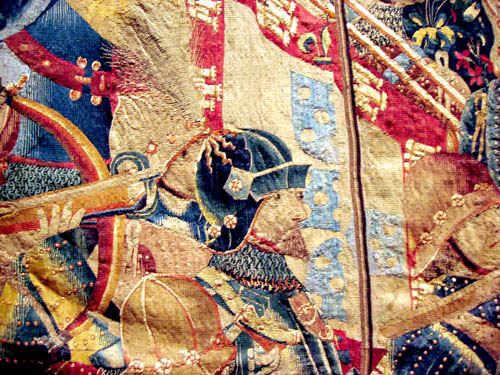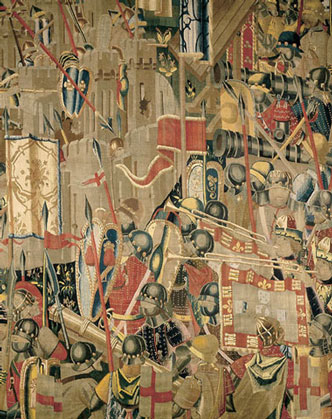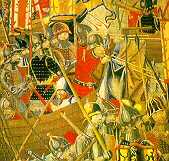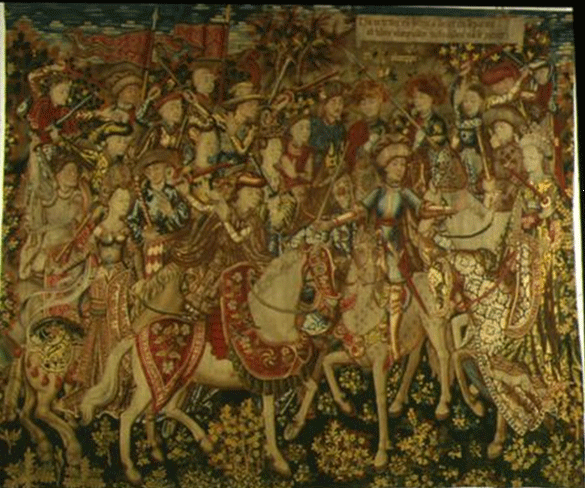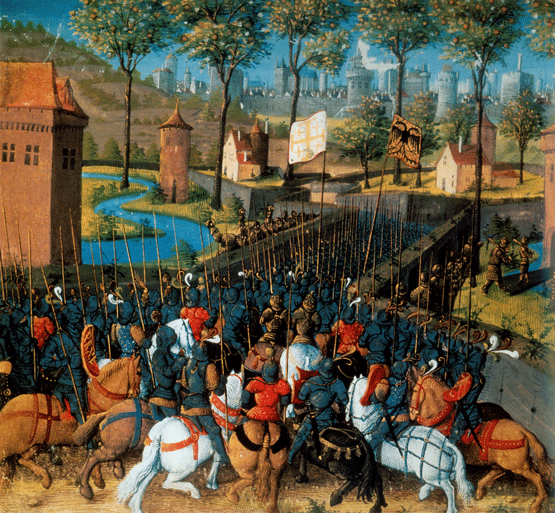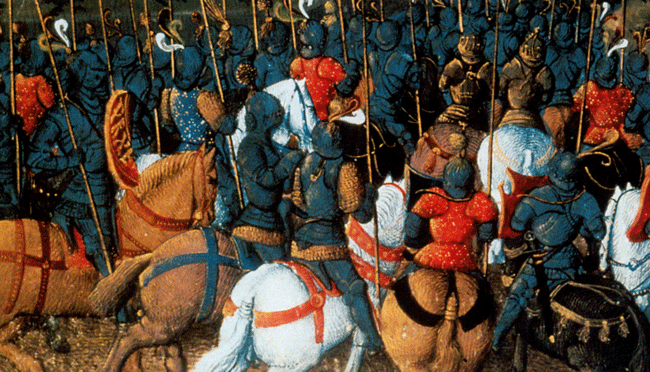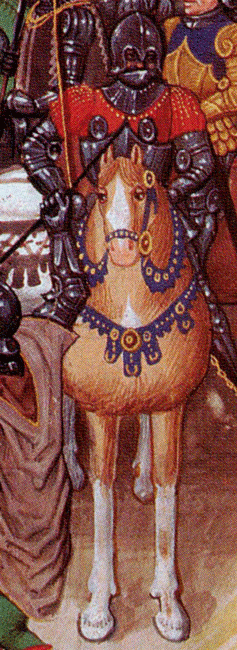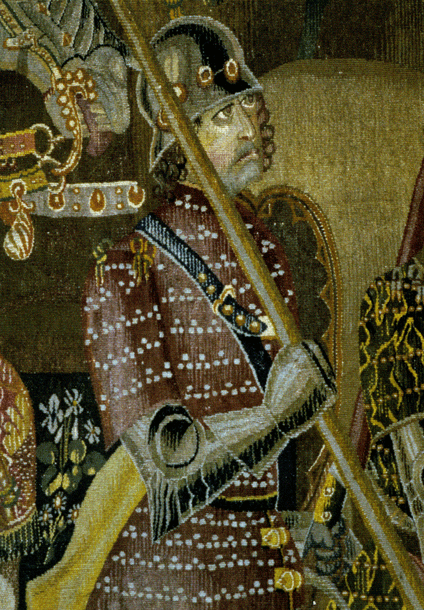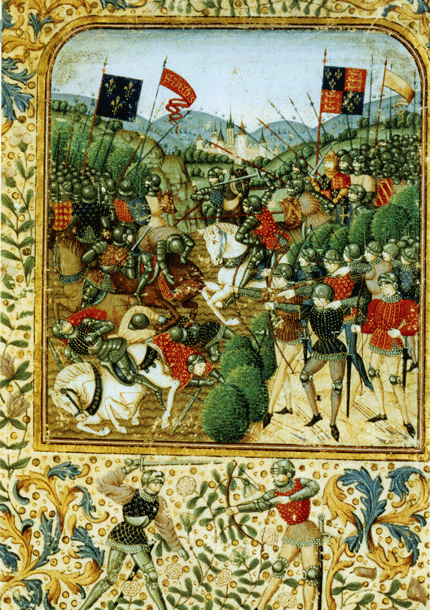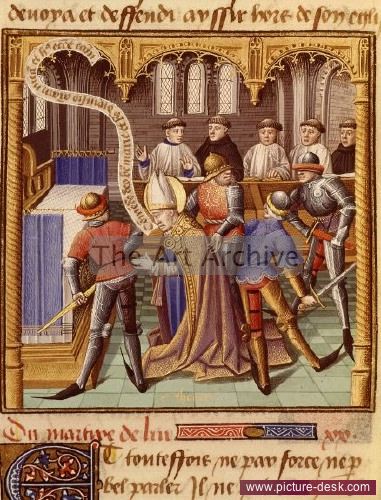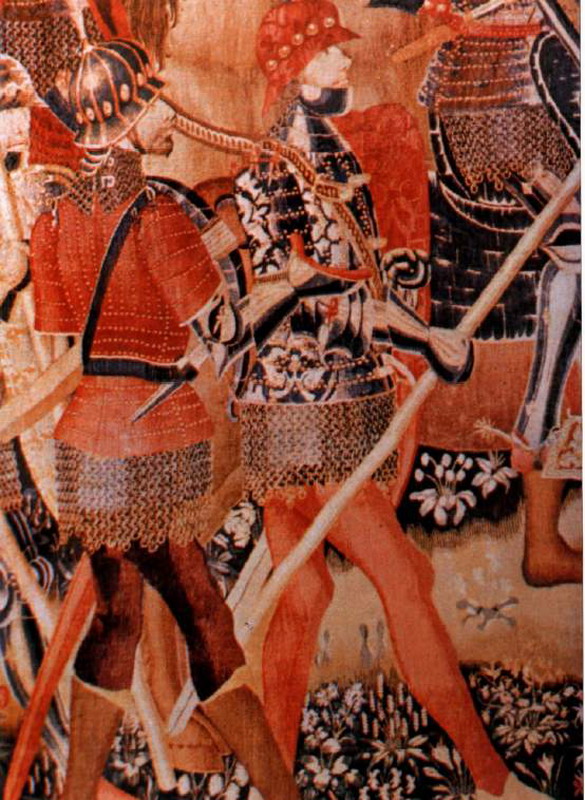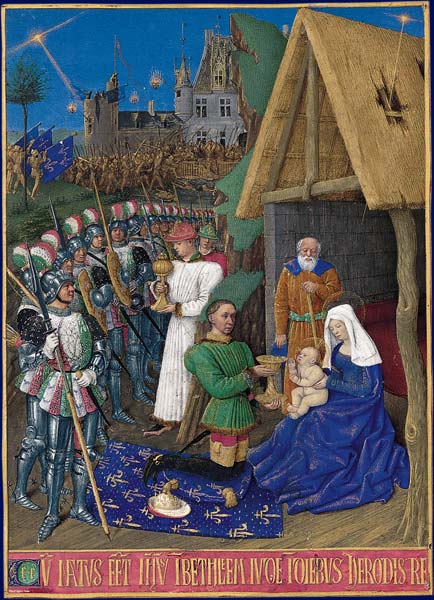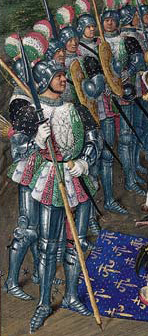And here's some background on the tapestries from a story about their restoration (at http://en.lacerca.com/news/cultura/pastrana_t...4-1.html):
| Quote: |
| Exhibition ‘The Tapestry of Collegiate Pastrana’
The sample consisted of four tapestries from the Collegiate Pastrana, which houses one of the most interesting museums of Spain parish and retains a set of tapestries considered one of the best collections in the world of Gothic. The tapestries dating from 1471 to 1475 and contain scenes of the conquest of Arzila and Tangier, Morocco’s fortified ports by Alfonso V4 of Portugal in 1471. There are four panels of four meters high and 11 meters long, approximately, woven in wool and silk, with a great historical interest as documents of his day were woven for a few years after the events depicted and not only provide information on his characters, but also provide useful information relating to uniforms and weapons of the Portuguese and their fleet. |

